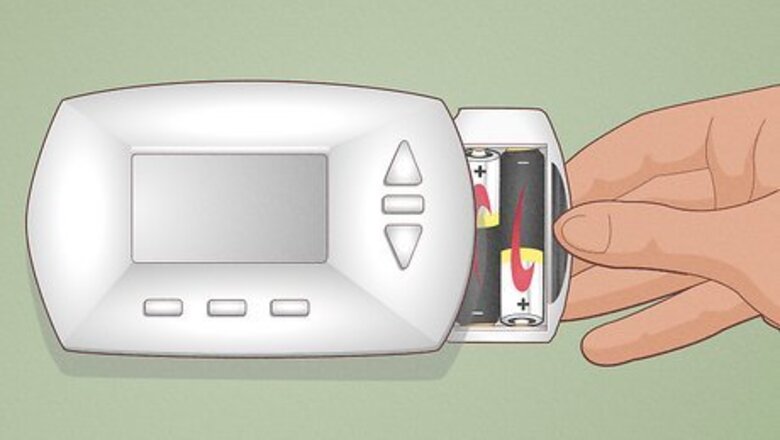
views
- If the screen is dark or blank, replace the batteries and check the circuit breakers.
- Ensure the furnace and air conditioner are turned on, and the thermostat is wired correctly to your HVAC system.
- Resetting your thermostat can fix programming issues and keep it in sync with your HVAC system.
The battery needs to be replaced.
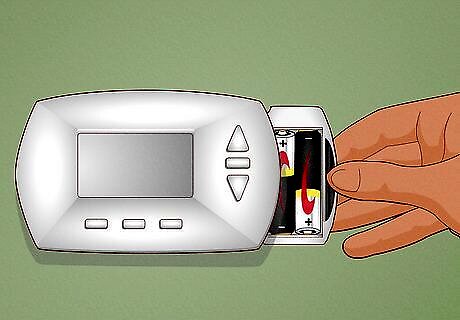
Is the display dark or blank? Many thermostat displays are battery-powered. If the display on your thermostat is off, replacing the battery will usually fix the problem. Most thermostats take 1 or 2 AA or AAA batteries. To access the battery compartment, remove the thermostat's faceplate. For some thermostats, you'll need to unmount the unit from its wall plate instead. To do this, place your fingers at the bottom of the thermostat, then gently lift it upward and away from the wall. You can typically access the battery compartment without tools, but some thermostats may be screwed into the wall. If yours is screwed in, you'll just need a standard Philips head screwdriver to remove it.
A circuit may have tripped.
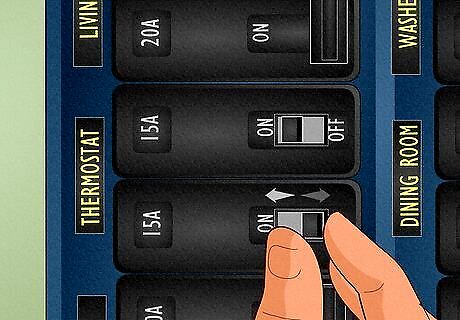
Check your circuit breakers. If the circuit that powers your furnace or air conditioning system has tripped, your thermostat's display may work (if it has one), but your HVAC system may not kick on. If the circuit that powers the wall your thermostat is connected to trips and your thermostat isn't battery-powered, your thermostat's display will also go blank. Locate the breaker box in your home—usually in your garage or basement—and find the breakers for your thermostat, furnace, and air conditioning (if applicable). If any breakers are out of position, turn them off and back on. If your thermostat is powered by a C wire, which is common with smart thermostats like Google Nest, the C wire may not be providing power to the thermostat. Before you inspect the C wire, turn off the main power breaker to your home to avoid electrocution. Then, remove the faceplate and make sure a wire is connected to the "C" terminal.
The thermostat isn't programmed correctly.
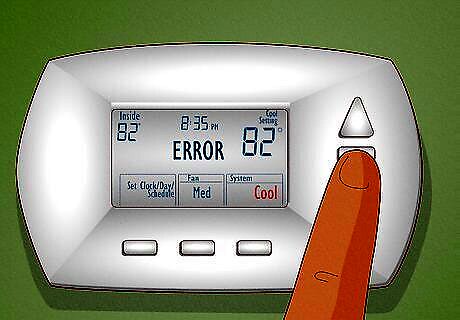
Your thermostat won't kick on if its current settings aren't correct. If your thermostat is heating or cooling at the wrong times, not turning on when it's supposed to, or keeps reverting to different settings, it's likely on a specific program. If not, make sure the thermostat is set to a temperature that's sure to engage your furnace or air conditioner. If your thermostat is set for a specific schedule, you can usually override the schedule by selecting a temperature and pressing the "Hold" button. Alternatively, you can usually return your thermostat to its original program by pressing a Run or Run program button.
The furnace or air conditioner may not be on.
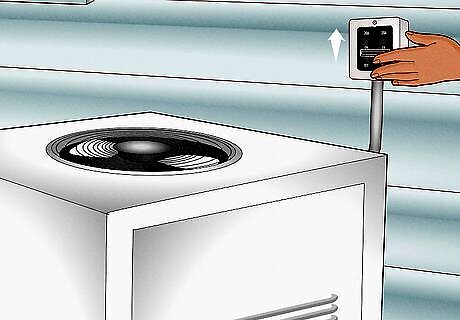
Check the power switch for your furnace or AC. If either is turned off, that system won't turn on, no matter how you program your thermostat. You'll usually find the power switch on the side of your furnace, though you may also find a light switch that controls your furnace on the wall near it. If your furnace has a pilot light instead of an electric starter, make sure the pilot light is on and that the sensor is not dirty. If the pilot light to your furnace is out and you don't feel comfortable lighting it yourself, contact an HVAC technician. Also, if you see a liftable metal housing near the power switch that contains a fuse, inspect the fuse. If it appears burnt or blackened, it should be replaced. However, a burned-out furnace fuse may indicate a bigger electrical problem, so contact an HVAC technician to avoid further issues.
There's a wiring problem.
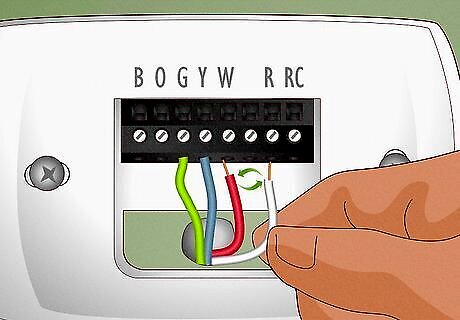
The wires in the thermostat should match the diagram in the manual. If you've just installed the thermostat and it's not working, there's a good chance it's wired incorrectly. Turn off the breaker that controls your thermostat (or, if you have a C wire, turn off the entire home's power to be on the safe side). Then, double-check the thermostat's manual to make sure you've connected the proper wires to each labeled terminal and that the cables are tightly secured. Also, use a soft, small paintbrush, lint-free cloth, or a can of compressed air to remove any dust from the wires and terminals. To access the wires, you'll typically need to remove the thermostat's faceplate. For other thermostats, you'll need to lift the entire thermostat away from its wall plate.
The thermostat isn't level on the wall.
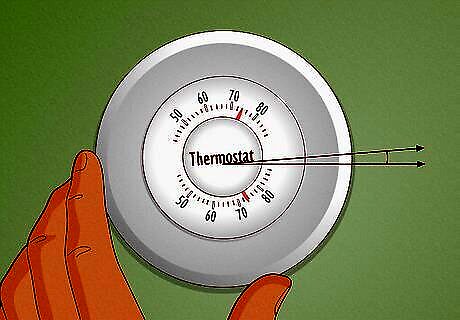
A lopsided thermostat can impact temperature sensing. If your thermostat has a mercury bulb for sensing the temperature, it's incredibly important that the thermostat be perfectly level on the wall. For each degree out of level, the accuracy will be off by a degree of temperature.
You might need to reset the thermostat.

Resetting your thermostat can fix many issues. If the thermostat seems out of sync with your HVAC system, a quick reset will often fix the problem. Just keep in mind that resetting the thermostat will cause you to lose any saved programs and settings. Some thermostats have a Reset button somewhere on the exterior. If yours does, press and hold the button for about 5 seconds to reset the thermostat. If there is no reset button and your thermostat takes batteries (most do), remove the faceplate (or lift the thermostat from the wall plate) and remove the batteries for about a minute. If this doesn't reset your thermostat, try reinserting the batteries incorrectly/backward, leaving them in place for about 10 seconds, and then reinserting them correctly. For non-battery digital thermostats, flip the breaker to perform a reset. If you have a smart thermostat, you can usually reset it from the device's Settings menu.
The thermostat is badly placed in the room.
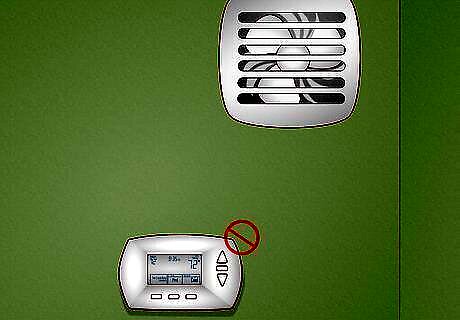
Your thermostat may not be sensing the proper temperature. If your thermostat is mounted directly above or below an air vent, close to a window or door, near a heat-radiating appliance, or receiving too much direct sunlight, its temperature may not accurately reflect the room's temperature. In this situation, even if you set your furnace to turn on when the temperature reaches 65 degrees, the thermostat may think it's warmer if it's too warm from the sun.
There are problems with airflow.

A short-cycling HVAC system could indicate airflow issues. If you're able to start the furnace from the thermostat but it turns off before it's supposed to: Change your air filters regularly. A dirty air filter may be overheating the exchanger, leading to your furnace or AC turning off. It's best to replace your air filters every 60 to 90 days. Check the air vents in your home. Be sure to leave all air vents in your home open, even if nobody uses a particular room. Not having your air vents open can lead to heat buildup that turns off your furnace automatically.
The gas line is off.

A gas-powered furnace won't work without gas. If your gas furnace isn't turning on despite the proper settings on your thermostat, make sure your furnace's gas valve is set to the On position. If you're not sure where that is, check your furnace's manual, which you should be able to find on its manufacturer's website. If the gas switch is on, find out if other gas-powered appliances (such as gas ovens, stoves, and dryers) are working. If not, the problem is likely related to your natural gas service.
There's a more serious problem.
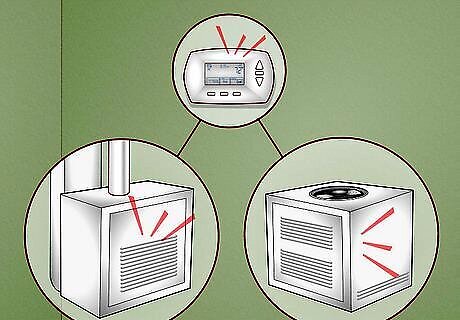
Your thermostat, furnace, or air conditioner may have a larger issue. If your thermostat, furnace, and/or air conditioner are still not working, a certified HVAC professional is the best person to call. A technician can diagnose more complicated problems like a bad thermostat control board, faulty wiring, and other issues. If you have an older thermostat, it's possible that it's reached the end of its life cycle and it's time to buy a new one. Fortunately, plenty of affordable thermostats are available, including smart furnaces that can help you save on your energy bill.
















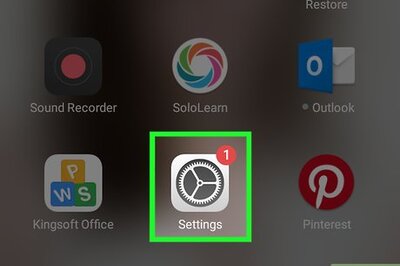

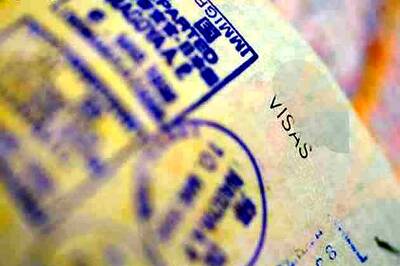

Comments
0 comment